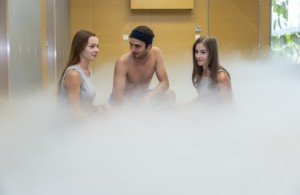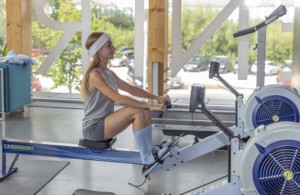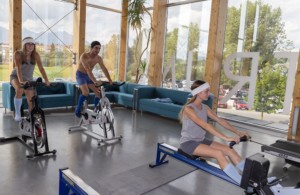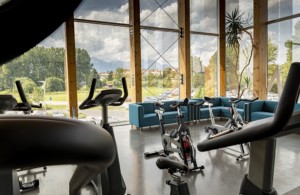Cryotherapy centre
The history of our treatment and rehabilitation methods dates back to the late 70s and early 80s. The procedure involves a stay of up to three minutes in a specially designed chamber, which has an average internal temperature of minus 120 ° C, followed by a session of vigorous exercise known as Kinesiotherapy. Staying in the chamber under medical supervision stimulates the natural production of enzymes and hormones, which in turn support the body’s self-healing and regeneration processes.
More information about cryotherapy
Cryotherapy stimulates receptors that respond only to the cold. During the procedure, the body’s internal temperature decreases by only 0.5°C and the temperature of your skin by a maximum of 3°C. However, the effects of extreme cold on the receptors triggers a process which helps to regulate nerve endings, stimulates metabolism, and increases pain thresholds (thus decreasing pain).
Additionally, as a result of exposure to extreme cold, the body is encouraged to produce corticosteroids in sufficient quantities to reduce inflammation, while also stimulating the production of endorphins, adrenaline and testosterone. This has various beneficial effects on the body and can even offer relief of chronic pain.
Upon arrival, guests are given moisture-resistant clothing that includes a T-shirt, shorts, headbands, gloves, socks, clogs and a mask to cover the nose and mouth. Certain parts of the skin must remain exposed in order to induce the above mentioned stimulation of receptors. Pre-treatment begins by entering the ‘pre-chamber’ with a temperature of -60 °C and lasts for approximately 30 seconds. After this, you enter the main Cryochamber through internal passage doors. The temperature reaches -120 °C and you stay in motion the whole time, avoiding any skin contact. You exit back via the pre-chamber, allowing the body to adapt to the change of temperature. After leaving the Cryochamber, you then perform 20 minutes of intense exercise to get the full effect of the treatment.
Scientific research and practical studies have produced excellent results to show improvement of a vast range of medical conditions, including: inflammatory musculoskeletal diseases (rheumatoid arthritis, rheumatic fever); degenerative diseases of the spine and joints (arthritis); diseases of the intervertebral discs, back pain, rheumatism and arthritis; multiple sclerosis; abnormal changes in muscle, joints and tendons after injury (contusion, haematoma, etc.); paralysis; spastic contractures of the limbs; primary and secondary osteoporosis arthritis and arthrosis, fibromyalgia (soft tissue pain in joints) cellulites, problems related to menopause; primary and secondary inflammatory changes; Alzheimer’s and Parkinson’s disease; complications following cerebral palsy; degenerative changes as a result of nerve motor system disorders; psoriasis; dermatitis; eczema, migraines, symptoms of depression, and erectile dysfunction.








